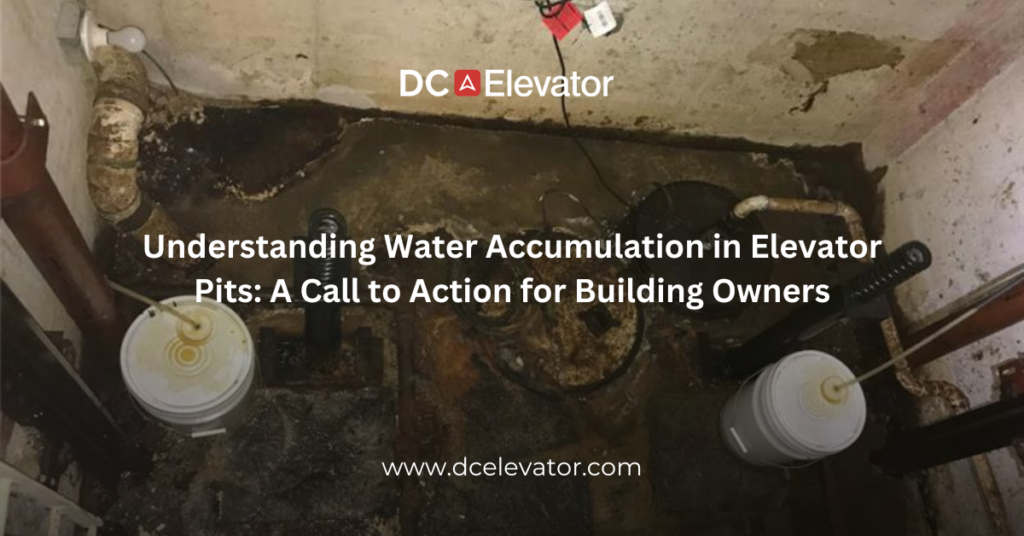At DC Elevator Company, we understand that maintaining a safe and efficient elevator system is a top priority for building owners. One common issue that can significantly affect the performance and longevity of elevators is water accumulation in the elevator pit. While the original construction aims for a perfectly sealed pit, various factors can lead to water ingress, which poses risks to both equipment and safety.
Why Water Accumulates in Elevator Pits
Water accumulation in elevator pits can occur due to several reasons:
- Building Settlement: Over time, buildings settle, which can create cracks or gaps in the pit structure. These openings may allow groundwater or surface water to seep in.
- Poor Drainage: Inadequate drainage systems around the building can lead to water pooling, which can eventually find its way into the elevator pit.
- Weather Conditions: Heavy rainfall or snowmelt can overwhelm drainage systems, leading to increased water levels.
- Piping Issues: Leaks from nearby plumbing or HVAC systems can also contribute to water accumulation in the pit.
The Risks of Water Accumulation
Water in the elevator pit is more than just an inconvenience; it can lead to serious damage and safety concerns, including:
- Damage to Equipment: Water can corrode or rust critical components, such as elevator pit channels, buffers, and springs. This deterioration can lead to costly repairs or even complete system failures.
- Electrical Hazards: If water comes into contact with electrical traveling cables, it can cause degradation of the insulation, leading to potential electrical failures or short circuits.
- Increased Maintenance Costs: Prolonged exposure to moisture can result in higher maintenance costs due to the need for repairs and replacements of affected components.
- Safety Risks: Accumulated water can create slipping hazards for maintenance personnel and pose risks during emergency situations.
The Importance of a Functional Sump Pump
One of the most effective ways to mitigate the risks associated with water accumulation is to ensure that your elevator pit has a functioning sump pump. A sump pump is designed to automatically remove excess water from the pit, keeping it dry and protecting your elevator system from water-related issues. Regular maintenance and testing of the sump pump are crucial to ensure it operates efficiently when needed.
What Should You Do If You See Water in the Pit?
If you receive reports or notice any signs of water in your elevator pit, it’s essential to take immediate action:
- Contact DC Elevator Company: Reach out to us to discuss the situation. Our team of experts can assess the problem, identify the source of the water, and recommend appropriate solutions.
- Regular Inspections: Schedule routine inspections of your elevator system to catch potential issues early, including water accumulation.
- Maintain Your Sump Pump: Ensure that your sump pump is in good working condition and free of debris. Regular checks can prevent unexpected failures.
Conclusion
At DC Elevator Company, we are committed to helping our customers maintain safe and reliable elevator systems. Understanding the risks associated with water accumulation in elevator pits is crucial for protecting your investment. If you notice water in your elevator pit, don’t hesitate to contact us. Together, we can ensure your elevator system remains in top condition and free from the harmful effects of moisture.
